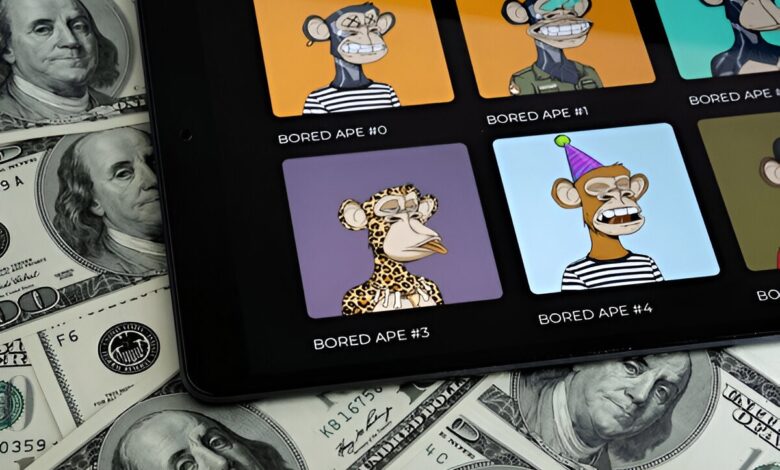The Role of NFTs in Spain’s Creative Economy: A Comprehensive Analysis
The creative economy has long been a cornerstone of Spain’s cultural identity, contributing significantly to its GDP and global reputation. From the works of Picasso and Dalí to the vibrant flamenco music and contemporary digital art, Spain’s creative sector is a dynamic blend of tradition and innovation.

The creative economy has long been a cornerstone of Spain’s cultural identity, contributing significantly to its GDP and global reputation. From the works of Picasso and Dalí to the vibrant flamenco music and contemporary digital art, Spain’s creative sector is a dynamic blend of tradition and innovation. In recent years, a new player has entered the scene, promising to revolutionize how artists, creators, and consumers interact: Non-Fungible Tokens (NFTs). These blockchain-based digital assets are transforming the creative economy by providing new opportunities for monetization, ownership, and engagement. This article explores the role of NFTs in Spain’s creative economy, delving into their impact on artists, cultural institutions, and the broader market.
1. Empowering Spanish Artists and Creators
A New Revenue Stream for Artists
One of the most significant contributions of NFTs to Spain’s creative economy is their ability to empower artists. Traditionally, artists have relied on galleries, auction houses, and intermediaries to sell their work, often losing a substantial portion of their earnings to commissions. NFTs eliminate these middlemen by allowing artists to mint and sell their work directly on blockchain platforms. This direct-to-consumer model ensures that creators retain a larger share of their profits.
For example, Spanish digital artists like José Delbo and Carlos Marzal have embraced NFTs to reach global audiences and monetize their work more effectively. By leveraging platforms like OpenSea and Rarible, they can showcase their art to collectors worldwide without the need for physical exhibitions.
Royalties and Passive Income
NFTs also introduce the concept of programmable royalties, enabling artists to earn a percentage every time their work is resold. This feature is particularly beneficial for emerging artists who may see their work appreciate in value over time. In Spain, where the art market is highly competitive, this provides a sustainable income stream for creators, encouraging them to continue producing innovative work.
2. Preserving and Promoting Spanish Culture
Digitizing Cultural Heritage
Spain is home to a rich cultural heritage, from the Alhambra in Granada to Gaudí’s architectural masterpieces in Barcelona. NFTs offer a unique opportunity to digitize and preserve these cultural assets. By creating NFTs of historical artifacts, monuments, and artworks, Spain can ensure their longevity while making them accessible to a global audience.
For instance, the Prado Museum in Madrid has experimented with NFTs by tokenizing high-resolution images of iconic paintings like Velázquez’s Las Meninas. These digital collectibles not only generate revenue for the museum but also serve as a modern way to engage younger, tech-savvy audiences.
Promoting Regional Art Forms
NFTs are also being used to promote Spain’s diverse regional art forms. Flamenco music, traditional ceramics, and local crafts can be tokenized and sold as NFTs, providing artisans with a platform to showcase their work internationally. This not only preserves these art forms but also injects new life into Spain’s rural economies, where many of these traditions originate.
Also Read: How Much Does it Cost to Create a Blockchain App in 2025?
3. Boosting Spain’s Digital Economy
Attracting Global Investment
The global NFT market has seen exponential growth, with sales reaching billions of dollars annually. Spain is well-positioned to capitalize on this trend, thanks to its thriving tech ecosystem and creative talent. By fostering a supportive environment for NFT projects, Spain can attract international investors and position itself as a hub for digital innovation.
Cities like Barcelona and Madrid are already emerging as hotspots for blockchain startups and NFT marketplaces. Initiatives such as government grants, tax incentives, and partnerships with tech companies can further accelerate this growth, ensuring that Spain remains competitive in the global digital economy.
Creating Jobs and Opportunities
The rise of NFTs has created new job opportunities in Spain, from blockchain developers and digital marketers to legal experts specializing in intellectual property rights. As more artists and businesses adopt NFTs, the demand for these skills will continue to grow, contributing to job creation and economic development.
4. Challenges and Ethical Considerations
Environmental Concerns
One of the most significant criticisms of NFTs is their environmental impact. Blockchain networks like Ethereum, which host most NFT transactions, consume substantial amounts of energy. This has raised concerns about the sustainability of NFTs, particularly in a country like Spain, which is increasingly focused on green energy and environmental conservation.
However, solutions are emerging, such as the transition to more energy-efficient blockchain protocols like Ethereum 2.0 and the use of carbon offset programs. Spanish NFT platforms can lead the way by adopting these sustainable practices and promoting eco-friendly alternatives.
Intellectual Property and Copyright Issues
The decentralized nature of blockchain technology poses challenges for intellectual property (IP) rights. In Spain, where copyright laws are strictly enforced, there is a need for clear regulations to protect artists and consumers in the NFT space. Unauthorized minting of copyrighted works, known as “NFT theft,” is a growing concern that requires collaboration between policymakers, legal experts, and the blockchain community.
5. The Future of NFTs in Spain’s Creative Economy
Integration with the Metaverse
The metaverse, a virtual reality space where users can interact with digital environments, is set to play a pivotal role in the future of NFTs. Spanish artists and businesses can leverage this technology to create immersive experiences, such as virtual art galleries or concerts. For example, a flamenco performance could be tokenized as an NFT and experienced in the metaverse, reaching audiences far beyond Spain’s borders.
Education and Awareness
To fully realize the potential of NFTs, there is a need for education and awareness campaigns in Spain. Many artists and consumers are still unfamiliar with blockchain technology and its applications. Workshops, online courses, and collaborations with universities can help bridge this knowledge gap, ensuring that Spain’s creative economy remains at the forefront of digital innovation.
Collaboration Between Public and Private Sectors
The success of NFTs in Spain will depend on collaboration between the public and private sectors. Government support, through funding and regulatory frameworks, can provide a solid foundation for growth. At the same time, private companies and startups can drive innovation by developing user-friendly platforms and exploring new use cases for NFTs.
Conclusion
NFTs are more than just a passing trend; they represent a paradigm shift in how we create, consume, and value art. In Spain, where creativity is deeply ingrained in the national identity, NFTs offer a unique opportunity to revitalize the creative economy, preserve cultural heritage, and embrace the digital future. By addressing challenges such as environmental sustainability and intellectual property rights, Spain can position itself as a global leader in the NFT space.
As the world continues to digitize, the role of NFTs in Spain’s creative economy will only grow. From empowering artists and preserving culture to boosting the digital economy and creating jobs, the potential is immense. By embracing this technology, Spain can ensure that its creative sector remains vibrant, innovative, and globally competitive for years to come.











